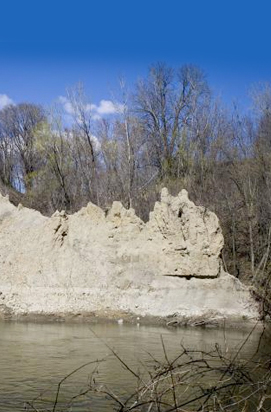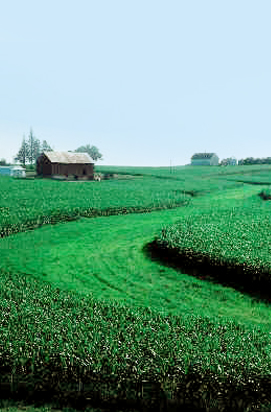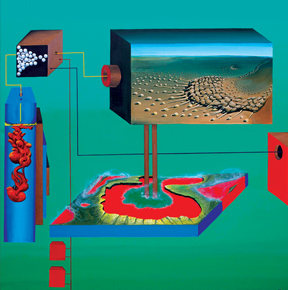Sedimental Journey Down the Mississippi
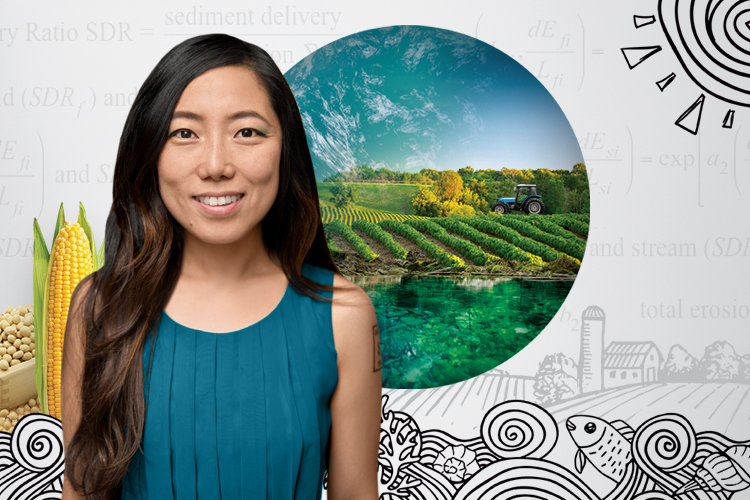
Se Jong Cho ’00, environmental engineer, took on the water-quality issues in the Midwest for a PhD project. She developed a tool for stakeholders to pinpoint and prioritize specific watershed areas needing attention.
Because its interconnected waterways join the mighty Mississippi River, which originates inside the state, farmers,businesses, and environmentalists in Minnesota—and across the Heartland—struggle to meet EPA/Clean Water Act standards. Who can stop the runoff from crops grown in Minnesota from contributing to the Dead Zone in the Gulf of Mexico without reducing productivity or profit margins?
Environmental engineer Se Jong Cho ’00 researched water quality issues in the Greater Blue Earth River Basin (GBERB) of southern Minnesota. As a PhD candidate at Johns Hopkins University, Cho is developing a comprehensive computer modeling system assessing one of that area’s persistent problems: sediment pollution in the river system.
Cho’s research area comprised the river basins that drain into the Minnesota River, and the confluence with the Mississippi River, just south of the Twin Cities. Hundreds of streams feed these rivers, many of which have been designated as aquatic life impairments for turbidity, according to a Minnesota State University Water Resources Center report.Why southern Minnesota, and why sediment? Cho says that region’s waterway degradation has multiple contributors and multiple stakeholders. The sediment pollution there is just as problematic as the nutrient pollution in the Chesapeake Bay.
“When we don’t know where the problem is coming from,” she says, “it’s very difficult for policymakers to come up with management strategies, let alone the economic impact of suggested strategies.” Sediment is problematic because, suspended in water, along with other materials such as algae and organic and inorganic matter, it creates turbidity, or cloudiness. Too much turbidity is unhealthy for aquatic life; fish get particles caught in their gills and find it hard to see food, for example. “How much water is flowing in the rivers matters,” says Cho.
Her research team traced the sources of sediment through sediment fingerprinting, and discovered that in recent decades more sediment is coming from near-channel sources like stream banks and bluffs, rather than from agricultural fields. This, she says, is due to successful agricultural conservation measures adapted and practiced since the 1930s.
“Before Europeans settled in the Land of 1,000 Lakes,” says Cho, “the area was pockmarked with wetlands; prairie grass grew everywhere; water stayed in the land.” The fertile, impermeable soil, a result of Ice Age glacial deposits, yielded bumper crops and quickly attracted farmers to the Midwest. Their sustained agriculturalsuccess begot the regional nickname: America’s Breadbasket. It also increased demand for more arable soil. Clearing fields and draining soil to increase acreage contributed to erosion.
Cho gathered specific data on sources of stream sediment, as well as erosion-control methods from areas across the watershed. Control methods vary. They include agricultural conservation (planting conservation tillage, grassing in waterways, building terraces and buffer strips); hydrologic conservation (wetland restoration and drainage ditches); river contouring; stream restoration (stabilizing bluffs, ravines, and streambanks); and floodplain water storage.She used programming algorithms to develop a predictive model allowing users to measure sediment yields and develop sediment control strategies. It includes robust estimates of sediment sources, transport rates, and storages.
“We wanted to come up with realistic solutions,” she says about her team and local stakeholders. “My model can evaluate management options—such as reducing corn production and replanting crops with wetlands—for specific regions inside the watershed, and then predict how much each solution will cost.”
Cho’s work facilitates improved understanding of watershed’s hydrology (the scientific study of the movement, distribution, and quality of water on Earth and other planets, including water resources and watershed sustainability). She has given presentations to stakeholders several times during her six-year project, hoping it will spur wise decisions and stem further environmental damage. She plans to defend her dissertation in early spring 2016, then attempt something really daunting: enter the workforce. Cho hopes to find a new project and/or teaching position where she can continue problem-solving through engineering.
—Diane Bosser
Se Jong Cho completed a BS in civil engineering from Northwestern University, where she studied structural engineering, transportation engineering and planning, and environmental planning and design. She completed an MS in environmental engineering while working at the Center for Talented Youth, and then at Bechtel Corporation, as a hydrology/hydraulics engineer, and an MSE in environmental management and economics.
Se Jong’s Sci + Art
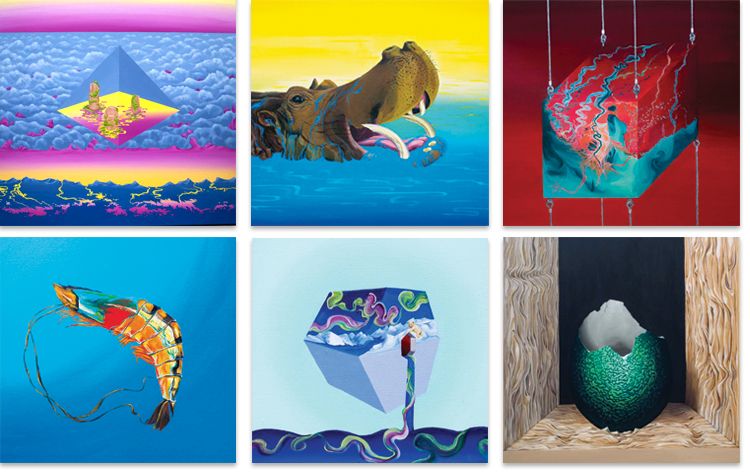
Recurring subjects in Cho’s artwork include animals and aquatic life; human anatomy and geometric shapes. Water is almost always the foundation of her compositions. Long before Se Jong Cho developed high-tech tools for sediment control along Minnesota waterways, she thought about being an artist.
She took her first courses in the Art Department as a studio art major, with Calculus I and Physics I on the side. Technique and theory in color and composition held her interest and imagination—until she discovered her abilities in math and science. Her physics professor, Dr. Don Day, showed her the engineering programs; she started her second year at MC as an engineering student.
For more than a decade, Cho worked through bachelor’s, master’s, and PhD programs, all in civil engineering specialties. She also taught science and worked at a multinational engineering firm, but she never lost her creative impulses. Two years ago, she made time to paint. By then, she was living in Baltimore and well into her six-year PhD project. Painting was a way to unwind.
“I am using the techniques I learned in Professor [Robert] Cohen’s art classes,” she says. “I’ve been pretty prolific.” She exhibited her work in four solo shows, most recently, the Blooms and Bodies exhibit at Current Gallery in Baltimore.
Her acrylic paintings are works of modern surrealism. Geometric shapes juxtaposed against organic forms create tension. Her colors are vibrant; her compositions feel precise but edgy. Science and the environment naturally inform her art. Works often contain geologic and/or anthropogenic elements—rock formations and waterways. Recurring subjects include animals and aquatic life; human anatomy and geometric shapes. Water is almost always the foundation of her compositions.“I find beauty in the infographics and maps of scientific journals, so sometimes I translate them into paintings,” she says.
For one work, Mississippi River Delta, she used false-color satellite imagery of the delta region and wrapped it around a cube held in mid-air by steel cables. In another, Fragments, she painted four elements—dunes, a thermal reservoir, liquid metal, and aspirin tablets—all interconnected and suspended against a graded sea-green background, reminiscent of ocean waters.
Part science illustration, part environmental homage, Cho’s fantasy art lets her share how she views the world around her—the scientific, engineering, and philosophical medley of it all.

